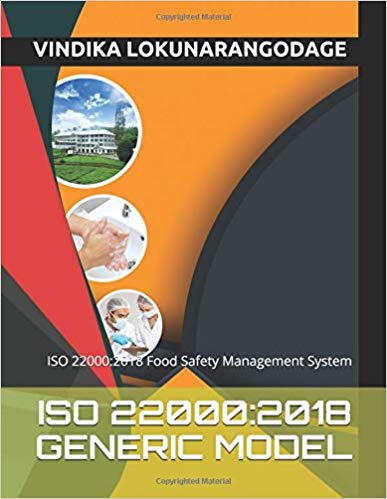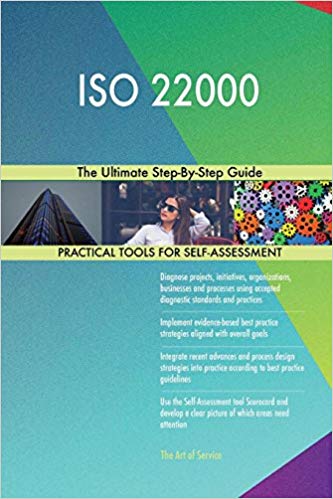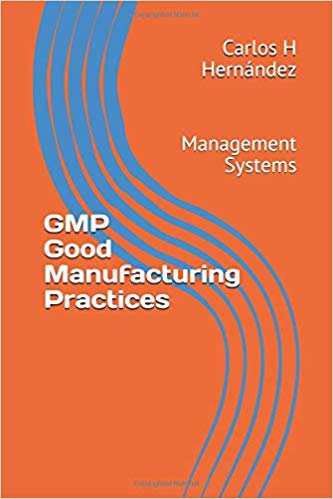3 Definitions T 40
Terms, definitions and books related to food safety and audits

The beginning of wisdom is the definition of terms. Socrates
Some terms and definitions currently used in management systems and audits:
Accident: undesired event causing death or health and environmental damages
Audit client: everyone requesting an audit
Audit conclusions: outcome of an audit
Audit criteria: everything against which audit evidence is compared
Audit findings: every deviation from audit criteria
Auditee: everyone who is audited
Auditor: everyone who is trained to conduct audits
Competence: personal skills, knowledge and experiences
Conformity: fulfillment of a specified requirement
Continual improvement: permanent process allowing the improvement of the global performance of the organization
Control: ensure compliance with the specified criteria
Customer: anyone who receives a product
Deviation: failure to meet a given threshold
Document (documented information): any support allowing the treatment of information
End product: any final result of a process or an activity
Hazard: situation that could lead to a potential incident
Incident: undesired event that could lead to health damages
Nonconformity: non-fulfillment of a specified requirement
Organization: a structure that satisfies a need
Problem: the distance that has to be overcome between real and desired situation
Procedure: set of actions to carry out a process
Product (or service): every result of a process or activity
Quality: aptitude to fulfil requirements
Record: document providing objective evidence of achieved results
Requirement: explicit or implicit need or expectation
Review: survey of a file, product, process so to verify whether preset objectives are achieved
Risk: likelihood of occurrence of a threat or an opportunity
Stakeholder: person, group or company that can affect or be affected by an organization
Supplier: an entity that provides a product
Work environment: set of human and physical factors in which work is carried out
Examples of interested parties: investitors, customers, suppliers, employees and social, public or political organizations
Some terms and definitions specific to food safety:
Control measure: activity to prevent, eliminate or reduce a hazard to the safety and suitability of the food or reduce it to an accemtable level
Correction: any action to eliminate or transform a potentially dangerous product
Critical Control Point (CCP): stage at which a control must be applied to prevent, eliminate or reduce a food safety hazard or to bring it back to an acceptable level
Critical limit: criterion for determining whether a CCP is under control
Food: every product intended for nourishment
FS: Food Safety
Food hazard: potential harmful effect of a biological, chemical or physical nature on people’s health following the consumption of food
Food hygiene: means and conditions to control food hazards and to guarantee the food safety and suitability
Food safety: absence of harm to the consumer when food is prepared and/or consumed according to its intended use
Food suitability: ensuring that food when consumed as intended, is acceptable to the consumer
FSMS: Food Safety Management System
Good manufacturing practice: all the preventive activities that are necessary for food production under acceptable hygienic conditions
HACCP: Hazard Analysis Critical Control Point. System for the control of the hazards that threaten food safety
HACCP method: tool of reasoning that makes it possible to identify, evaluate and control the food safety hazards
Incident: undesired event that can lead to deterioration of health
Operational prerequisite program (oPRP): set of essential processes and conditions guaranteeing the control of the probability of the introduction, contamination or proliferation of food safety hazards
Prerequisite program (PRP): set of processes and conditions guaranteeing safe end products for the consumer
Recall: measure preventing the consumption of unsafe food after distribution or sale
Validation (food): establishment of the evidence to determine whether the FSMS is in conformity and effective
Verification (food): examination of evidence to determine whether the FSMS is in conformity and effective
Withdrawal: measure preventing the distribution or the sale of an unsafe food
In the terminology of food safety management systems, do not confuse the following:
- anomaly, defect, dysfunction, failure, nonconformity, reject and waste
- an anomaly is a deviation from what is expected
- defect is the non-fulfillment of a requirement related to an intended use
- dysfunction is a degraded functionwhich can lead to a failure
- failure is when a function has become unfit
- nonconformity is the non-fulfillment of a requirement in production
- reject is a nonconforming product which will be destroyed
- waste is when there are added costs but no value
- audit and inspect
- to audit is to improve the FSMS
- to inspect is to verify the conformity of a process or product
- audit, auditee and auditor
- an audit is a process of evaluating and improving the FSMS
- an auditee is the one who is audited
- an auditor is the one who conducts the audit
- audit program and plan
- an audit program is the annual planning of the audits
- an audit plan is the description of the audit activities
- calibration and verification
- the calibration is the confirmation of a value read in relation to a standard
- verification is the positioning of landmarks
- communicate and inform
- to communicate is to pass on a message, listen to the reaction and discuss
- to inform is to give someone meaningful data
- control and optimization
- control ismeeting the objectives
- optimization is the search for the best possible results
- customer, supplier and subcontractor
- a customer receives a product
- a supplier provides a product
- a subcontractor provides a service or a product on which a specific work is done
- effectiveness and efficiency
- effectiveness is the level of achievement of planned results
- efficiency is the ratio between results and resources
- follow-up and review
- follow-up is the verification of the obtained results of an action
- review is the analysis of the effectiveness in achieving objectives
- food hazard and risk
- the hazard is a potential adverse effect coming from a food (contaminated food)
- the risk is the level of appearance and the severity of the hazard to the consumer (food infection: vomiting, diarrhea)
- food safety and security
- safety is what is acceptable to the consumer
- security means no harm to the consumer
- gap and problem
- the gap is the non-respect of a threshold
- the problem is a gap that must be reduced (to obtain a result)
- hazard and risk analysis
- hazard analysis is the responsibility of participants in the food chain
- risk analysis is in the public health domain
- indicator and objective
- an indicator is the information on the difference between the achieved result and the pre-set objective
- an objective is a sought after commitment
- microorganism (microbe) and contaminant
- micro-organism: living organism of microscopic size, dangerous or useful (bacterium, virus, yeast)
- contaminant: substance accidentally or deliberately introduced into the food (cleaning agent residue, disinfectant, pesticide)
- organization and enterprise, society, company
- organization is the term used in the standard ISO 9001 as the entity between the supplier and the customer
- enterprise, society and company are examples of organizations
- organizational chart and process map
- the organizational chart is the graphic display of departments and their links
- the process map is the graphic display of processes and their interaction
- process, procedure, product, activity and task
- a process is how we satisfy the customer using people to achieve the objectives
- a procedure is the description of how we should conform to the rules
- a product is the result of a process
- an activity is a set of tasks
- a task is a sequence of simple operations
- verify and validate
- to verify is a process to prove compliance
- to validate is to ensure that a process will be compliant and effective
- withdrawal and recall
- a withdrawal is the measure to prevent the distribution
- a recall is the measure to prevent post-distribution consumption
Remark 1: each time you use the term "improvement opportunity" instead of nonconformity, malfunction or failure, the auditee will gain a little more confidence in you.
Remark 2: the use of ISO 19011, ISO 22000 and ISO 9000 definitions is recommended. The most important thing is to determine a common and unequivocal vocabulary for everyone in the company.
Remark 3: the customer can also be the user, the beneficiary, the initiator, the client, the prime contractor, the consumer.
Remark 4: ISO 19011 version 2018 uses the terms procedure (.gif) ), record (
), record ( ) and documented information together. We prefer the terms document, procedure and record.
) and documented information together. We prefer the terms document, procedure and record.
For other definitions, comments, explanations and interpretations that you don’t find in this module and annex 06, you can consult: .jpg)

- ISO Online Browsing platform (OBP)
- IEC Electropedia
- Hygiene of food products — French-English glossary (NF V 01-002, AFNOR 2021)
- Information technology -Vocabulary - Part 36: Learning, education and training (ISO/IEC 2382-36, 2019)
.jpg) Books for further reading on internal audits:
Books for further reading on internal audits:
 Denis Provonost, Internal Quality Auditing, ASQ Quality Press, 2000
Denis Provonost, Internal Quality Auditing, ASQ Quality Press, 2000 Food Drug and Cosmetic Division, The Certified HACCP Auditor Handbook, ASQ Quality Press, 2001
Food Drug and Cosmetic Division, The Certified HACCP Auditor Handbook, ASQ Quality Press, 2001 David Hoyle, John Thompson, ISO 9000 Auditor Questions, Transition Support, 2001
David Hoyle, John Thompson, ISO 9000 Auditor Questions, Transition Support, 2001.jpg) Spencer Pickett, The Essential Handbook of Internal Auditing, John Wiley & Sons, 2005
Spencer Pickett, The Essential Handbook of Internal Auditing, John Wiley & Sons, 2005 Karen Welch, The Process Approach Audit Checklist for Manufacturing, ASQ Quality Press, 2005
Karen Welch, The Process Approach Audit Checklist for Manufacturing, ASQ Quality Press, 2005 Paul Palmes, Process Driven Comprehensive Auditing, ASQ Quality Press, 2009
Paul Palmes, Process Driven Comprehensive Auditing, ASQ Quality Press, 2009 J. P. Russel, The Process Auditing and Techniques Guide, ASQ Quality Press, 2010
J. P. Russel, The Process Auditing and Techniques Guide, ASQ Quality Press, 2010 Janet Smith, Auditing Beyond Compliance, ASQ Quality Press, 2012
Janet Smith, Auditing Beyond Compliance, ASQ Quality Press, 2012 I. Irshad (Auteur), M. Khan HACCP: A Guide to a Practical Development & Implementation, Independently published, 2017
I. Irshad (Auteur), M. Khan HACCP: A Guide to a Practical Development & Implementation, Independently published, 2017 Vindika Lokunarangodage, ISO 22000:2018 Generic Model: ISO 22000:2018 Food Safety Management System, 35840, 2018
Vindika Lokunarangodage, ISO 22000:2018 Generic Model: ISO 22000:2018 Food Safety Management System, 35840, 2018 Gerardus Blokdyk, ISO 22000 the Ultimate Step-By-Step Guide, 5starcooks, 2018
Gerardus Blokdyk, ISO 22000 the Ultimate Step-By-Step Guide, 5starcooks, 2018 Carlos Hernández, GMP Good Manufacturing Practices: Management Systems, Independently published, 2018
Carlos Hernández, GMP Good Manufacturing Practices: Management Systems, Independently published, 2018
 Minute of relaxation. Paganini's violin concert performed with facial expressions.
Minute of relaxation. Paganini's violin concert performed with facial expressions.
When I think of all the books still left for me to read, I am certain of further happiness. Jules Renard
